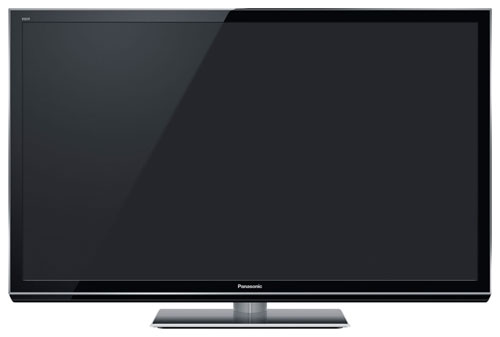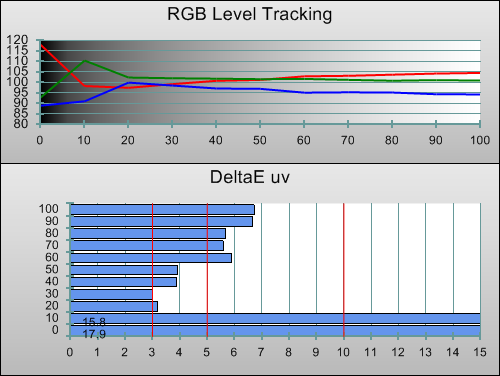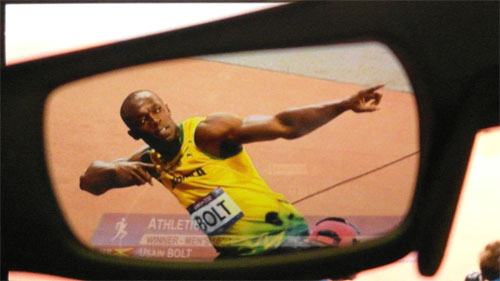As a TV manufacturer, Panasonic has a history of segregating its product ranges in a purposeful and clear manner in order to minimise internal competition as much as possible. An example that comes to mind is how the company used to limit the screen sizes of its LCD TVs to below 42 inches to avoid cannibalising the sales of larger Viera plasmas (although over the past couple of years this policy had been abandoned due to the growing popularity and higher profit margins of LED LCD televisions compared to plasma displays).
The Japanese brand appears to be applying the same philosophy to its 2012 lineup of plasma TVs (at least in the UK market). Gone are the 46-inchers across the board, probably because they do not sell as well as other sizes. The flagship VT50 plasma series will not be available at screen sizes smaller than 50 inches, whereas one rung below, the GT50 range comprises only a 42-inch and a 50-inch model. This means that viewers who want THX certification (both 2D and 3D) and ISFccc calibration controls on their plasma TV, yet cannot accommodate anything bigger than 42″, have no choice but the Panasonic TX-P42GT50B which is the subject of our review today. It also means that those who desire these features AND a screen larger than 50″ in size will have to jump straight to the top-end VT50 series.

Since we have published an indepth review of its larger sibling, the TX-P50GT50, some three months ago, this article will dispense with certain aspects which have already been covered, such as design, user interface, remote, input ports, smart TV functionalities and video processing.
Right off the bat, we carried out black level measurements on the Panasonic TX-P42GT50 across all its available picture modes, because some readers have alerted us to differing black levels between the [THX Cinema] and [Professional] modes. Originally, it was our understanding that this discrepancy was a feature of continental European and Asian models, because the British review samples of the TX-P50GT50 and TX-P50VT50 we tested some months ago certainly didn’t exhibit this issue. However, sure enough, according to our Klein K-10 meter, minimum luminance level (MLL) in the most accurate out-of-the-box [THX Cinema] mode was 0.010 cd/m2, whereas both the [Professional1] and [Professional2] modes doubled the figure to 0.020 cd/m2. To provide a subjective confirmation, we verified the lighter blacks in [Professional] modes by eye too.
For the sake of completeness, we’ll mention here that the better MLL can be obtained in the [Normal] mode as well, but because this picture preset featured a severely oversaturated green (reminiscent of plasma televisions of yesteryear), and partook in some dynamic dimming/ black level fluctuation (which was pretty aggressive at the low end) even with [C.A.T.S] disabled, we ruled it out for critical viewing.
Maximum luminance was lower in [Professional] viewing mode compared to [THX Cinema]. Using a 100% stimulus window test pattern from the AVSHD disc as our reference, the highest light output we managed to extract from 42GT50 in [THX Cinema] mode was 142 cd/m2, but only 112 cd/m2 in either [Professional1] or [Professional2]. For the record, we generally peg top-end luminance to 120 cd/m2 in our HDTV reviews to ensure consistency across different brands and models – the capped light output in [Professional] modes leaves us slightly short, especially when you consider that some whiter-than-white clipping occurs way before peak luminance is hit.
While our earlier review samples did exhibit lessened peak luminance output in the [Professional] modes, the discrepancy in black level was not present. That we are now seeing the latter behaviour on the TX-P42GT50B could possibly be due to different screen sizes, or perhaps more worryingly, brought about by a firmware update (the software on our loan sample was already updated to the latest version of 1.621 when we received it).
What we know for sure is this: on a TX-P42GT50 running firmware 1.621, the [Professional] modes – which offer the full array of calibration controls including 10-point white balance, 10-point gamma and a 3-axis colour management system (CMS) for both primary and secondary colours – is handicapped in terms of dynamic range compared to the [THX Cinema] mode.
This leaves us between a rock and a hard place. The [Professional] modes can be calibrated to within an inch of perfection when it comes to greyscale, gamma and colour owing to its comprehensive (and fully functional) calibration suite, but will exhibit inferior black level and peak light output. On the other hand, [THX Cinema] will enjoy deeper blacks and brighter whites, yet its colours will be less accurate given the absence of advanced calibration controls in this viewing mode.
Remembering ISF’s (Imaging Science Foundation) guidance on the most important aspects of picture quality (which ranks contrast ratio above colour saturation and accuracy), in the end we opted to go with the [THX Cinema] mode which yielded the greater contrast ratio.
 |
| RGB tracking and delta errors (dEs) in [THX Cinema] mode |
The greys in [THX Cinema] leaned towards the warm side, although since this was largely consistent above 30% stimulus it shouldn’t present a problem for most viewers. Those who wish improve upon this result in [THX Cinema] mode (to take advantage of its superior contrast ratio) will have to either wade into the service menu, or invest in an off-board video/ colour processor which allows for external manipulation of white balance and chromaticities. Neither are for the fainthearted.
![Gamma curve in [THX Cinema] mode](https://www.hdtvtest.co.uk/news/wp-content/uploads/2018/04/hdtv_Panasonic-TXP42GT50_gamma.png) | |
| Gamma curve in [THX Cinema] mode | Corresponding gamma tracking |
Average gamma in [THX Cinema] mode was 2.2, which was serviceable enough in a dimly-lit environment, although slightly brighter than the 2.4 target that we have been shooting for since ITU adopted it as the reference EOTF (electro-optical transfer function) for flat-screen HDTV displays used in studio mastering.
![CIE chart in [THX Cinema] mode](https://www.hdtvtest.co.uk/news/wp-content/uploads/2018/04/hdtv_Panasonic-TXP42GT50_cie.jpg) |
| CIE chart with reference to HD Rec.709 |
![Colour luminance levels in [THX Cinema] mode](https://www.hdtvtest.co.uk/news/wp-content/uploads/2018/04/hdtv_Panasonic-TXP42GT50_colour-luminance.png) |
| Post-calibration colour luminance (coloured bars = targets; black bars = measured values) |
Given the omission of CMS controls from the [THX Cinema] mode, the best we could hope for was that there were no glaring colour errors. Fortunately the Panasonic TX-P42GT50B obliged: most importantly colour decoding for red and blue was spot-on (i.e. no red push). Green primary was slightly oversaturated, and the secondary colours were a touch off-hue, but these shouldn’t be readily apparent to the average viewer outside of a side-by-side comparison with a reference display.
| Colour saturation tracking in [THX Cinema] mode |
Measuring colour saturations on the Panasonic 42GT50 revealed a familiar pattern to the majority of HDTVs on which we’ve managed to deploy Calman 5 – an oversaturation of red and blue at 25%, 50% and 75% intervals. Again, most users shouldn’t notice this in day-to-day viewing. One thing to note is that the saturation points were very linear, so even though the targets were slightly off in the [THX Cinema] mode, the hue remained consistent for all six primary and secondary colours.
| Dead pixels | None |
| Screen uniformity | Thin stripe of lighter discolouration on right side of screen |
| Overscanning on HDMI | 0% with [16:9 Overscan] set to “Off“ |
| Blacker than black | Passed |
| Calibrated black level (black screen) | 0.010 cd/m2 [THX Cinema]; 0.020 cd/m2 [Professional] |
| Calibrated black level (ANSI checkerboard) | 0.013 cd/m2 [THX Cinema]; 0.025 cd/m2 [Professional] |
| Black level retention | Stable |
| Primary chromaticity | Very good |
| Scaling | Excellent |
| Video mode deinterlacing | Very effective jaggies reduction |
| Film mode deinterlacing | Passed 3:2 cadence in 480i and 1080i, and 2:2 in 576i |
| Viewing angle | Excellent |
| Motion resolution | Excellent (1080 natively) |
| Digital noise reduction | Acceptable at baseline |
| Sharpness | “Clover leafing” on luma zone plate pattern; not visible in real-life content |
| Image retention | A few instances, which are quickly cleared |
| Posterization | Mild, though worse with poor source and fast motion |
| Phosphor trails | Mild, though severity depends on individual susceptibility |
| 1080p/24 capability | Judder-free in 2D and 3D |
| Input lag | 24ms compared to lag-free CRT |
| Default [Normal] mode (2D) | 117 watts |
| Default [Normal] mode (3D) | 201 watts |
| [THX Cinema] mode (2D) | 122 watts |
| [THX3D Cinema] mode (3D) | 195 watts |
| Standby | 1 watt |
Measurements taken with full-field 50% grey screen to approximate real-world viewing.
Using full-field grey test patterns to check for screen unevenness, we noticed a vertical band of lighter discolouration – most obvious around 20% to 30% stimulus – running down the right side of the panel (2 cm wide; 2 inches from the right-side edge). In real-world viewing this was largely invisible, except when the scene panned across a solid background of a specific tonality (which was pretty rare).
Considering that the plasma was essentially uncalibrated, the images put out by the Panasonic TX-P42GT50 were surprisingly absorbing. The inky blacks and resultant dynamic range magnetically pulled us into the scenes displayed on screen, capturing our attention in a manner few flat-panel televisions could match let alone surpass. To the eagle-eyed, the picture may look overly warm, but the linear nature of the red predominance (as well as the wonderful contrast performance on show) means that it’s not difficult to tune it out.
Since this is the fifth plasma display we’ve seen from the Japanese TV maker this year, we are now well-versed with the strengths and weaknesses of these Viera TVs, so let’s do a quick recap. Black-level performance, motion resolution and 1080p/24 handling are all top-notch; and standard-definition video processing is very decent. There are the odd instances of “double fuzzy images” (which can be minimised by setting [Intelligent Frame Creation] to “Min“) and dynamic false contouring, but we do not consider these to be deal-breakers in light of the TX-P42GT50B’s other virtues.
 |
| Usain Bolt on BBC 3D, seen through an active-shutter lens |
We’ve said it before and we’ll say it again: the best extra-dimensional viewing experience during the day does not come from active-shutter plasma 3DTVs for two reasons. One, they simply cannot muster enough brightness to combat both the darkening effect of the shuttered eyewear AND daytime sunlight, so 3-D images will lose contrast and depth. Two, the flicker caused by the constant shuttering of the lenses is more noticeable against brighter backdrops (windows etc.), which can contribute to quicker onset of eye fatigue and headache.
Good thing that the men’s 100m final (which was aired in the third dimension on BBC HD) took place around 9pm then. In general, when watched at night, 3D material looked positively engaging on the TX-P42GT50, with plenty of depth and virtually nil in the way of crosstalk and judder.
The Panasonic TX-P42GT50B delivers supremely beautiful images, thanks largely to class-leading black-level and contrast performance. However, we couldn’t help but feel disappointed that the deepest degree of black is not accessible through the most customisable [Professional] modes, which prevents us from unlocking the full potential of this excellent HDTV display.
That the TX-P42GT50 still manages to secure a “Highly Recommended” award from us is a testament of its overall strength versus similarly-sized models from rival TV brands. But within Panasonic’s own hierarchy of Viera plasmas, it is comfortably outshone by the lower-ranked 42ST50 which not only doesn’t have its maximum brightness capped in the most calibration-friendly picture preset, but also exhibit the same deep black level across all viewing modes. And that’s without taking into account the less expensive price of the ST50 (which doesn’t offer 10-point white balance controls though, only 2-point, it has to be remembered). We certainly hope that the company will issue a firmware in the near future to fix these issues, and restore the GT50’s rightful status as a step-up model to the ST50.
